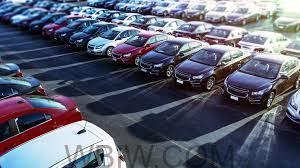
INDIANA – The new labor contracts between the United Auto Workers union and General Motors, Ford, and Stellantis will make a big difference in the paychecks of 145,000 autoworkers. It will raise their pay at least 11% immediately and likely more than 30% over the contract’s life. But it won’t make much difference in the prices you have to pay when buying your next car.
“The labor contracts don’t mean you go to a dealership and the car costs more money,” said Ivan Drury, analyst for sales tracker Edmunds. “If wages go up 11%, an overnight price change is unrealistic. The result is that for the consumers, the labor cost doesn’t mean a lot.”

The contract win for the UAW came after the 46-day Stand Up Strike, starting in September, aimed at all three big Detroit automakers simultaneously.
However, large as the gains are, they are unlikely to move the needle on car prices, with Edmunds analyst Ivan Drury noting, “For the consumers, the labor cost doesn’t mean a lot.” Labor costs are less than a tenth of the expenses incurred in making a car, with electronic components, raw materials, and finished third-party parts accounting for 93 percent of the cost to the vehicle manufacturers.
However, the fact is that the three unionized automakers still have to compete in the market with nonunion automakers. Ford, GM, and Stellantis account for less than half of US vehicle sales.
If the Big Three could pass along higher costs, be it raw material, labor, or other expenses, in the form of higher prices, no automaker would ever lose money. That’s not reality.
“The automakers will have difficulty passing those costs onto consumers,” said Michelle Krebs, an analyst with Cox Automotive.

Car prices are driven far more by supply and demand than by the cost of the vehicle. According to Edmunds ‘ data, the average transaction price reached $48,760 in October. That’s less than $50 below the record average car price set in December of 2022, and it’s up about $10,600, or 28%, from the average price in October 2017.
That substantial price increase was not driven by increased costs or labor. It was driven by the strong demand for autos and a limited supply of vehicles due to the shortage of some parts, namely computer chips.
That led to most buyers being forced to pay above the manufacturer’s suggested retail price, or “sticker price.” In past years, very few car buyers ever had to pay above sticker price for a car.
Most American new car buyers are not buying directly from automakers but from dealerships -independent businesses that buy cars in bulk from automakers at wholesale prices and sell them at whatever price the market will bear.
Another factor driving car prices higher is consumers buying cars with more features and options that are now available. The demand for those extra features is raising the average car price.



